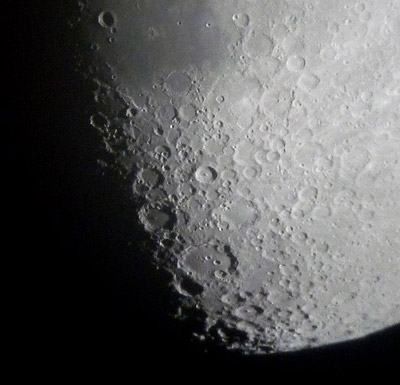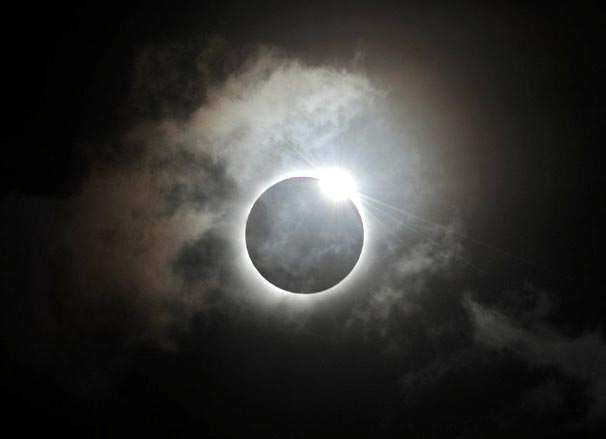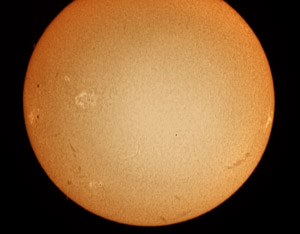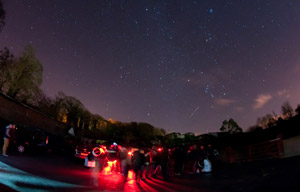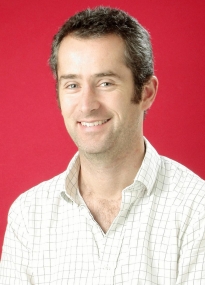Total Eclipse Cairns, Queensland, Australia – 14th November 2012
After checking out the site close to Ellis Beach, roughly 5km north of Palm Cove earlier in the day, my wife Shirley and our fellow umbraphiles, Col and Marcia Maybury headed to Col’s aptly named ‘Hat tree’ beach. The name came from a hat which Col had tied to a tree on an earlier ‘reckie’ visit with his lovely wife Marcia.
When we arrived around 3am we were amazed by the beautifully clear inky black, ‘moonless’, sky with majestic Orion high in the north – but upside down of course! The Southern Milky Way stretched from horizon to horizon, dotted with unfamiliar bright stars and constellations. Sirius was high overhead in the zenith with Canopus further to the south not far from the ‘false cross’ part of Vela and Carina, and Jupiter and the southern polar constellations all easily on view. Low in the south was the famous Southern Cross with the pointers, Alpha and Beta Centauri, below and almost hidden by a palm tree. Over the next few hours, several wide-angle shots of the Milky Way and the southern stars were captured.
Around 4.30am we noticed the sky brightening in the south east and brilliant Venus glared high above the ocean in a clear azure-blue sky. The beach was also the chosen location for fifteen or twenty other eclipse watchers and they set up their camps around us as the eclipse hour approached. To the south was a group of teenagers who had lit a roaring beach fire. The smell of the burning wood and the noise of the breaking surf just a few feet away will stay in our memories forever- an idyllic observing site – and an almost magical sky with temperatures around 23OC – certainly not observing conditions that we are used to.
The sky continued to be largely clear all around as the dawning Sun brightened, but there was an annoying plume of cloud which appeared to be rising from a peak in a small ‘saddle island’ in the bay. As the Sun climbed from the sea, the obscuring cloud was illuminated, burning gold against a blue sky – the scene resembling the plume of an erupting volcano. The cumulus cloud was stubborn and despite most of the rest of the sky being resolutely clear, the cloud remained in front of the Sun as the eclipse began. Minutes ran through quickly as first contact (around 5.35am) passed and then after twenty minutes or so we got our first fleeting glimpse of the Sun with a tiny bite out of its top left-hand edge – the eclipse was happening! The plume of cloud remained stalwartly blocking our view until a moment or so before totality when a break appeared to reveal a thin crescent of silver Sun against an inky black sky. Totality was moments away – suddenly another tiny triangular patch of cloud engulfed the totally eclipsed disk and it obscured our precious scene until at last we were treated to a full view of the totally eclipsed Sun. It seemed as if the clouds had parted and the last puff of cumulus had ben blown away by the watching (and praying!) hoard. No signs of shadow bands and the cloud prevented our usual activity of watching the little eclipsed Sun patterns through the palm leaves. The sky was now twilight dark with several bright stars appearing and Venus clearly back on view. We were deep in the Moon’s shadow and the temperature drop felt evident enough for me to pull on a hooded fleece– the 360o horizon was tinged salmon pink against the violet-blue sky. During totality we could see several red-pink prominences and a section of the pink chromosphere clearly on view on the edge of the disk. It was an amazing sight with the ghostly corona, still mingling with some thin cloud appearing faintly against the inky black sky – in a blink it was over and the spectacularly brilliant diamond ring flash appeared at the Moon’s upper right limb to herald the end of totality and the need to replace the Sun filters and eclipse viewers. The corona was smaller than I had hoped – a clear indication that the solar maximum was beginning to wane. My most memorable event was the flash of the Sun to announce the grand finale of one of nature’s most enthralling events. I observed the Moon’s passage of the Sun in almost totally clear skies and we then proceeded to a breakfast bar in Sheridan Street/Captain Cooke Highway for a celebratory eclipse fry-up!
Cairns was definitely one of my most magical eclipse experiences. Col, Marcia and Cairns provided us with a glorious eclipse in a tropical setting – where will we next stand in the Moon’s shadow?
Footnotes:
-
The stretch of beach from where we observed was closed the day following the eclipse due to the presence of a four metre ‘Saltie’ or estuarine crocodile. These are extremely dangerous creatures.
-
Better to see a partial total solar eclipse than a total partial solar eclipse.
-
At one stage we thought that rather than being an umbraphile we would be umbrellaphiles.
-
The accepted theory is that the temperature drop during the progressive stages of the eclipse becomes sufficient that additional clothing is required (reference ‘hooded fleece’ above). This was not borne out by some temperature measurements made in Cairns (Kewarra Beach) – the temperature dropped suddenly from 22.450OC at 6.30am to 22.375OC at 6.45am – a difference of only 0.075OC. The impression that the temperature drop is much larger during an eclipse is probably due to the drop in light levels, and also to a possible reduction in humidity which we sense as a chilling of the air. The effect may be influenced by a range of factors including the length of totality, time of eclipse, solar altitude, site conditions and altitude etc.



